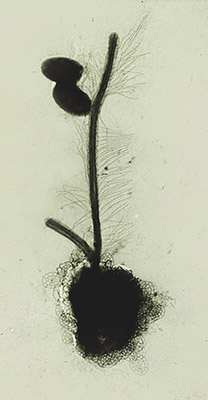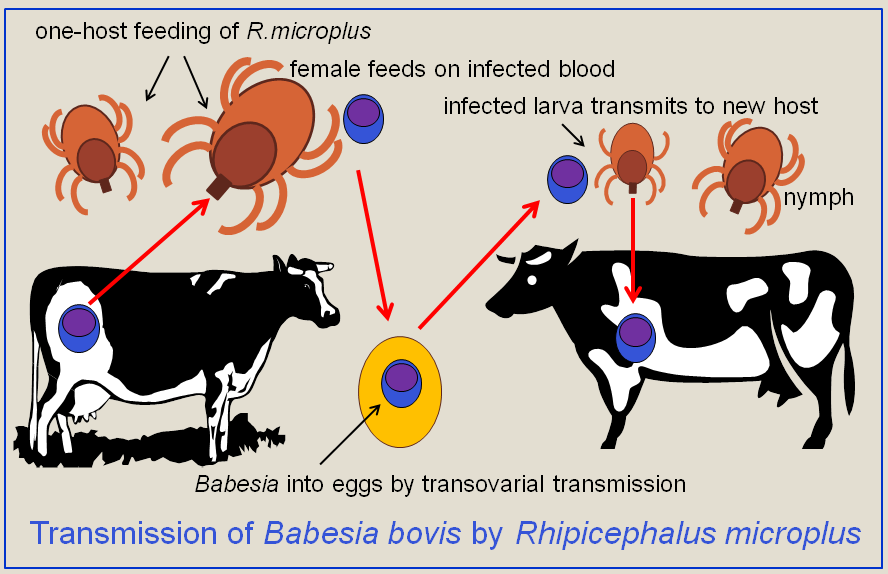|
Alveolate
The alveolates (meaning "pitted like a honeycomb") are a group of protists, considered a major clade and superphylum within Eukarya. They are currently grouped with the stramenopiles and Rhizaria among the protists with tubulocristate mitochondria, the group being referred to as SAR. Characteristics The most notable shared characteristic is the presence of cortical (near the surface) alveoli (sacs). These are flattened vesicles (sacs) arranged as a layer just under the membrane and supporting it, typically contributing to a flexible pellicle (thin skin). In armored dinoflagellates they may contain stiff plates. Alveolates have mitochondria with tubular cristae (invaginations), and cells often have pore-like intrusions through the cell surface. The group contains free-living and parasitic organisms, predatory flagellates, and photosynthetic organisms. Almost all sequenced mitochondrial genomes of ciliates and apicomplexa are linear. The mitochondria almost all carry mtD ... [...More Info...] [...Related Items...] OR: [Wikipedia] [Google] [Baidu] |
Myzozoa
Myzozoa is a grouping of specific phyla within Alveolata, that either feed through myzocytosis, or were ancestrally capable of feeding through myzocytosis. Many protozoan orders are included within Myzozoa. It is sometimes described as a phylum, containing the major subphyla Dinozoa and Apicomplexa, plus minor subphyla. The term Myzozoa superseded the previous term "Miozoa", by the same authority, and gave a slightly altered meaning. Phyla Within Myzozoa, there are around four phyla: *Apicomplexa – parasitic protozoa that lack axonemal locomotive structures except in gametes *Dinoflagellates – mostly marine flagellates many of which have chloroplasts *Chromerida – a marine phylum of photosynthetic protozoa *Perkinsozoa The term/group Myzozoa was not considered in a resolution of protist groups by Adl et al. 2012. Strict taxonomy only considers common traits possessed by all organisms of the group. Some organisms within each of the component groups of Myzozoa have ... [...More Info...] [...Related Items...] OR: [Wikipedia] [Google] [Baidu] |
Rhizaria
The Rhizaria are an ill-defined but species-rich supergroup of mostly unicellular eukaryotes. Except for the Chlorarachniophytes and three species in the genus Paulinella in the phylum Cercozoa, they are all non-photosynthethic, but many foraminifera and radiolaria have a symbiotic relationship with unicellular algae. A multicellular form, ''Guttulinopsis vulgaris'', a cellular slime mold, has also been described. This group was used by Cavalier-Smith in 2002, although the term "Rhizaria" had been long used for clades within the currently recognized taxon. Being described mainly from rDNA sequences, they vary considerably in form, having no clear morphological distinctive characters (synapomorphies), but for the most part they are amoeboids with filose, reticulose, or microtubule-supported pseudopods. In the absence of an apomorphy, the group is ill-defined, and its composition has been very fluid. Some Rhizaria possess mineral exoskeleton (thecae or loricas), which is in ... [...More Info...] [...Related Items...] OR: [Wikipedia] [Google] [Baidu] |
Stramenopile
Stramenopile is a clade of organisms distinguished by the presence of stiff tripartite external hairs. In most species, the hairs are attached to flagella, in some they are attached to other areas of the cellular surface, and in some they have been secondarily lost (in which case relatedness to stramenopile ancestors is evident from other shared cytological features or from genetic similarity). Stramenopiles represent one of the three major clades in the SAR supergroup, along with Alveolata and Rhizaria. Members of the clade are referred to as 'stramenopiles'. Stramenopiles are eukaryotes; since they are neither fungi, animals, nor plants, they are classified as protists. Most stramenopiles are single-celled, but some are multicellular algae including some brown algae. The group includes a variety of algal protists, heterotrophic flagellates, opalines and closely related proteromonad flagellates (all endobionts in other organisms); the actinophryid heliozoa, and oomycetes. ... [...More Info...] [...Related Items...] OR: [Wikipedia] [Google] [Baidu] |
Dinoflagellates
The dinoflagellates ( Greek δῖνος ''dinos'' "whirling" and Latin ''flagellum'' "whip, scourge") are a monophyletic group of single-celled eukaryotes constituting the phylum Dinoflagellata and are usually considered algae. Dinoflagellates are mostly marine plankton, but they also are common in freshwater habitats. Their populations vary with sea surface temperature, salinity, and depth. Many dinoflagellates are photosynthetic, but a large fraction of these are in fact mixotrophic, combining photosynthesis with ingestion of prey (phagotrophy and myzocytosis). In terms of number of species, dinoflagellates are one of the largest groups of marine eukaryotes, although substantially smaller than diatoms. Some species are endosymbionts of marine animals and play an important part in the biology of coral reefs. Other dinoflagellates are unpigmented predators on other protozoa, and a few forms are parasitic (for example, ''Oodinium'' and ''Pfiesteria''). Some dinoflag ... [...More Info...] [...Related Items...] OR: [Wikipedia] [Google] [Baidu] |
Ediacaran
The Ediacaran Period ( ) is a geological period that spans 96 million years from the end of the Cryogenian Period 635 million years ago (Mya), to the beginning of the Cambrian Period 538.8 Mya. It marks the end of the Proterozoic Eon, and the beginning of the Phanerozoic Eon. It is named after the Ediacara Hills of South Australia. The Ediacaran Period's status as an official geological period was ratified in 2004 by the International Union of Geological Sciences (IUGS), making it the first new geological period declared in 120 years. Although the period takes its name from the Ediacara Hills where geologist Reg Sprigg first discovered fossils of the eponymous Ediacaran biota in 1946, the type section is located in the bed of the Enorama Creek within Brachina Gorge in the Flinders Ranges of South Australia, at . The Ediacaran marks the first appearance of widespread multicellular fauna following the end of Snowball Earth glaciation events, the so-called Ediacaran bio ... [...More Info...] [...Related Items...] OR: [Wikipedia] [Google] [Baidu] |
Annual Review Of Microbiology
The ''Annual Review of Microbiology'' is a peer-reviewed academic journal that publishes review articles about microbiology. It was first published in 1947 as the third journal title released by Annual Reviews. It covers significant developments in the field of microbiology, including the study of bacteria, archaea, viruses, and unicellular eukaryotes. As of 2020, it has had four editors, with Charles E. Clifton and L. Nicholas Ornston serving more than twenty years each. The current editor is Susan Gottesman. History The ''Annual Review of Microbiology'' was first published in 1947, the third journal title released by the publishing company Annual Reviews, following titles in Annual Review of Biochemistry, biochemistry and Annual Review of Physiology, physiology. Its first editor was Charles E. Clifton. From 1956 to 1958, Pierre Grabar provided a summary of the microbiologic literature appearing in the Russian language through a partnership with the National Science Foundatio ... [...More Info...] [...Related Items...] OR: [Wikipedia] [Google] [Baidu] |
Annual Reviews (publisher)
Annual Reviews is an independent, non-profit academic publishing company based in San Mateo, California. As of 2021, it publishes 51 journals of review articles and ''Knowable Magazine'', covering the fields of life, biomedical, physical, and social sciences. Review articles are usually “peer-invited” solicited submissions, often planned one to two years in advance, which go through a peer-review process. The organizational structure has three levels: a volunteer board of directors, editorial committees of experts for each journal, and paid employees. Annual Reviews' stated mission is to synthesize and integrate knowledge "for the progress of science and the benefit of society". The first Annual Reviews journal, the ''Annual Review of Biochemistry'', was published in 1932 under the editorship of Stanford University chemist J. Murray Luck, who wanted to create a resource that provided critical reviews on contemporary research. The second journal was added in 1939. ... [...More Info...] [...Related Items...] OR: [Wikipedia] [Google] [Baidu] |
Babesia
''Babesia'', also called ''Nuttallia'', is an apicomplexan parasite that infects red blood cells and is transmitted by ticks. Originally discovered by the Romanian bacteriologist Victor Babeș in 1888, over 100 species of ''Babesia'' have since been identified. ''Babesia'' comprises more than 100 species of tick-borne parasites that infect erythrocytes (red blood cells) in many vertebrate hosts. ''Babesia'' species infect livestock worldwide, wild and domestic vertebrate animals, and occasionally humans, where they cause the disease babesiosis. In the United States, ''B. microti'' is the most common strain of the few which have been documented to cause disease in humans. Classification ''Babesia'' is a protozoan parasite found to infect vertebrate animals, mostly livestock mammals and birds, but also occasionally humans. Common names of the disease that ''Babesia microti'' causes are Texas cattle fever, redwater fever, tick fever, and Nantucket fever. The disease it cau ... [...More Info...] [...Related Items...] OR: [Wikipedia] [Google] [Baidu] |
Babesia Microti
Babesia microti is a parasitic blood-borne piroplasm transmitted by deer ticks. ''B. microti'' is responsible for the disease babesiosis, a malaria-like disease which also causes fever and hemolysis. Life cycle The life cycle of ''B. microti'' includes human red blood cells and is an important transfusion-transmitted infectious organism. Between 2010 and 2014 it caused four out of fifteen (27%) fatalities associated with transfusion-transmitted microbial infections reported to the US FDA (the highest of any single organism). In 2018, the FDA approved an antibody-based screening test for blood and organ donors. An important difference from malaria is that ''B. microti'' does not infect liver cells. Additionally, the piroplasm is spread by tick bites ('' Ixodes scapularis'', the same tick that spreads Lyme disease), while the malaria protozoans are spread via mosquito. Finally, under the microscope, the merozoite form of the ''B. microti'' lifecycle in red blood cells forms ... [...More Info...] [...Related Items...] OR: [Wikipedia] [Google] [Baidu] |
Cryptosporidium
''Cryptosporidium'', sometimes informally called crypto, is a genus of apicomplexan parasitic alveolates that can cause a respiratory and gastrointestinal illness (cryptosporidiosis) that primarily involves watery diarrhea (intestinal cryptosporidiosis), sometimes with a persistent cough (respiratory cryptosporidiosis). Treatment of gastrointestinal infection in humans involves fluid rehydration, electrolyte replacement, and management of any pain. , nitazoxanide is the only drug approved for the treatment of cryptosporidiosis in immunocompetent hosts. Supplemental zinc may improve symptoms, particularly in recurrent or persistent infections or in others at risk for zinc deficiency. ''Cryptosporidium'' oocysts are 4–6 μm in diameter and exhibit partial acid-fast staining. They must be differentiated from other partially acid-fast organisms including '' Cyclospora cayetanensis''. General characteristics ''Cryptosporidium'' causes cryptosporidiosis, an infectio ... [...More Info...] [...Related Items...] OR: [Wikipedia] [Google] [Baidu] |
Theileria
''Theileria'' is a genus of parasites that belongs to the phylum Apicomplexa, and is closely related to '' Plasmodium''. Two ''Theileria'' species, ''T. annulata'' and ''T. parva'', are important cattle parasites. ''T. annulata'' causes tropical theileriosis and ''T. parva'' causes East Coast fever. ''Theileria'' species are transmitted by ticks. The genomes of ''T. orientalis'' Shintoku'', Theileria equi'' WA, ''Theileria annulata'' Ankara and ''Theileria parva'' Muguga have been sequenced and published. ''Theileria equi'' is a known cause of equine piroplasmosis. Vaccines against ''Theileria'' are in development. In May 2010, a vaccine that was reported to protect cattle against East Coast fever had been approved and registered by the governments of Kenya, Malawi, and Tanzania. Description Species in this genus undergo exoerythrocytic merogony in the lymphocytes, histiocytes, erythroblasts, and other cells of the internal organs. This is followed by invasion of the erythr ... [...More Info...] [...Related Items...] OR: [Wikipedia] [Google] [Baidu] |





